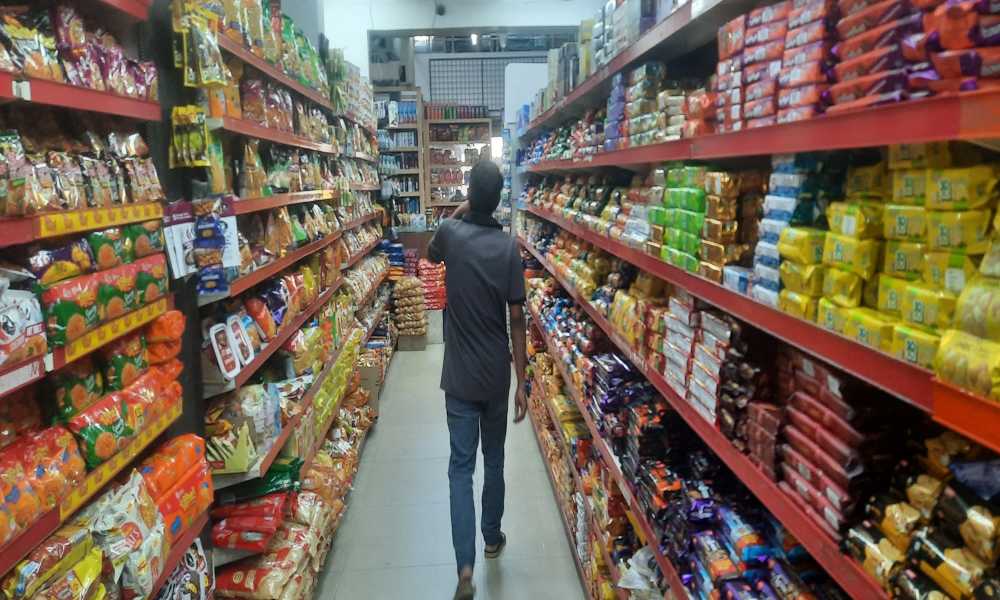Popularity among youngsters has increased the market size of ready-to-eat food in India.
The market size of the ready-to-eat food market in India has seen a compound annual growth rate (CAGR) of 20 percent in the last five years and sellers say that youngsters are the main consumers as they prefer time-saving food.
Bashir, Sales Manager of Shoppers’ Choice said, “The ready-to-eat food products have seen immense growth in sales in our supermarket since the last couple of years. There has been a 20 percent increase in sales as the sales percentage of ready-to-eat food products was 50 percent last year and it has increased to 70 percent this year.”
Kavya, store supervisor of Smart Point said, “Initially, stores did not focus much on the ready-to-eat food items and just had one or two range of products but the popularity of ready-to-eat food items increased in the last couple of years. Now there is a varied range of ready-to-eat food items like Korean cup noodles, one-minute poha, upma, biriyani, and many more with varied flavours respectively and all of them have great sales.”
The market size of ready-to-eat food in India has grown at the fastest rate of CAGR of 18-20 percent as shown in a report. Its market is expected to increase by almost USD 752 million from 2021 to 2026 .. India-based online grocery store Grofers reported a 170 percent increase in sales in the ready-to-eat category.
The export of products under the Ready to Eat (RTE), Ready to Cook (RTC), and Ready to Serve (RTS) segments have registered a CAGR of 10.4 percent from 2011-12 to 2020-21 as shown in a report.
Pushpa, who runs a small general store in Kengeri said, “I am running my store for a decade and started selling cup noodles in the last few years. Initially, it was not much in demand but in the last two years, the sales are good regarding the ready-to-eat item.”
She added that she buys a total of 60 to 70 packs of cup noodles every month and by the end of the month, all of them are sold as compared to 20 to 30 packs three years before.
Some of the major companies in the Indian ready-to-eat food market are McCain Foods India Pvt. Ltd., Gits Food Products Pvt Ltd., Haldiram Snacks Pvt., Bikanervala Foods Pvt. , Ltd., MTR Foods Pvt Limited ITC Limited, Ltd. Etc.
Targeted consumers:
A study by Indian Institute for Technology and Management on the ready-to-eat food industry shows that 65 percent of people consume ready-to-eat food and 75 percent of consumers prefer it because it saves time. Chief Commercial Officer of MTR Foods Sunaya Bhasin said that MTR foods are more focused on millennial consumers for the ready-to-eat food category as they seek high orders of convenience without compromising on taste.
Bashir said, “There is a variety of ready-to-eat food products that we sell in our supermarket like Maggie, MTR, Tata, and many more. Most of these products are bought by people under the age of 30. Since last few years, the consumption by youngsters has increased significantly as it is easily accessible with no additional efforts of traditional cooking.”
Chandrashekhar, store manager of Vishal Mega Mart Kengeri satellite town said, “Ready-to-eat food items have gained immense popularity nowadays. It is easy to cook, ready in a few minutes, and at the same time offers good taste, so it is obvious that youngsters are more attracted towards it.”
He further said that the store is planning to include a more varied range of ready-to-eat food items seeing the growth in the sales percentage.
Deepak, a college student said, “I live in a hostel and it has a certain schedule under which you have to eat. As a student, I often have to study till late at night and feel hungry, so ready-to-eat food is the best alternative to satiate the hunger at midnight.”
He said that ready-to-eat food also saves my time and effort in cooking and washing utensils. The majority of the students in his hostel prefer ready-to-eat food as it is budget-friendly and offers variety like poha, upma, noodles, oats, and many more with a good taste
Gaurav who works at an Information Technology (IT) company said, “My job requires me to travel and work at odd hours. In such situations, it is not often possible to order food or to cook as it demands time, money, and energy. Ready-to-eat food items seem like a saviour in such situations.”
He added that there are a lot of healthy ready-to-eat food items like oats and cereal that work as a great alternative to breakfast or snacks.
Future challenges:
In the same report by Indian Institute for Technology and Management, a survey shows that 37 percent of respondents feel ready-to-eat food products are not good for health and it could be concerning for the ready-to-eat industry.
Rekha, the mother of a teenager said, “Ready-to-eat food products are just another product in the market to attract children and it is successful in doing so. But these items are becoming a bad habit in our children’s lifestyle and need to be controlled. This cannot be a substitute for traditional cooking.”
Nutritionist Fiza said, “The popularity of ready-to-eat food among youngsters is understandable as it is convenient, tasty, and saves time. But youngsters should watch out for their consumption before acquiring it in their lifestyle.”
She further added that like any other readymade food product, ready-to-eat food items also have some flavoured additives which if consumed in high amounts can result in serious health conditions like high blood pressure, hypertension, heart diseases, and many more. So consumers must limit their consumption before it becomes a habit.”







